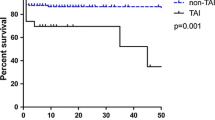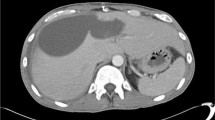Abstract
Gunshot wounds that traverse the mediastinum frequently cause serious injury to the cardiac, vascular, pulmonary, and digestive structures contained within. Most patients present with unstable vital signs signifying the need for emergency operation. An occasional patient will present with stable vital signs. Work-ups for such a patient may range from surgical exploration to radiographic and endoscopic testing to mere observation. We report our experience with diagnostic work-up of the stable patient with a transmediastinal gunshot wound. All stable patients who present to our urban level I trauma center following a transmediastinal gunshot wound undergo diagnostic work-up consisting of chest radiograph, cardiac ultrasound, angiography, esophagoscopy, barium swallow, and bronchoscopy. The work-up is dependent on the trajectory of the missile. Information on these patients is kept in a prospective database maintained by the trauma attending physicians. This database was analyzed and comparisons were made using Student’s t-test and the Fisher exact c2 as appropriate. Over a 68-month period, 50 stable patients were admitted following a transmediastinal gunshot wound. All of these patients had a chest radiograph followed by one or more of the above tests. 8 patients (16%) were found to have a mediastinal injury (4 cardiac, 3 vascular, and 1 tracheo-esophageal) requiring urgent operation (group 1). The remaining 42 patients (84%) did not have a mediastinal injury (group 2). There was no difference between groups with respect to blood pressure, pulse, respiratory rate, pH, base deficit, or initial chest tube output. There was one death in each group, and three complications in group 2. Patients may appear stable following a transmediastinal gunshot wound, even when they have life-threatening injuries. There is no difference in vital signs, blood gas, or hemothorax to indicate which patients have serious injuries. We advocate continued aggressive work-up of these patients to avoid missing an injury with disastrous consequences.
Similar content being viewed by others
Author information
Authors and Affiliations
Rights and permissions
About this article
Cite this article
Nagy, K., Roberts, R., Smith, R. et al. Trans-mediastinal Gunshot Wounds: Are "Stable" Patients Really Stable?. World J Surg 26, 1247–1250 (2002). https://doi.org/10.1007/s00268-002-6522-2
Published:
Issue Date:
DOI: https://doi.org/10.1007/s00268-002-6522-2




